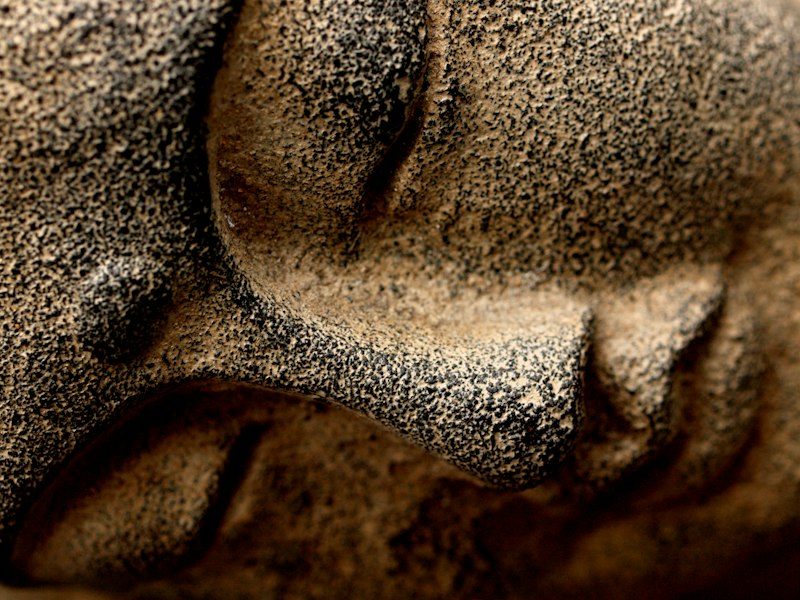Norse Stone Sagas: Gemstone Myths in Viking Culture
Have you ever wondered about the fascinating world of Viking culture and the legends that surround it? One aspect that often gets overlooked is their deep connection with gemstones. In this article, we will delve into the Norse stone sagas and explore the captivating myths associated with gemstones in Viking culture.
Gemstones held immense significance in Viking society. They were believed to possess mystical powers and were seen as conduits to the gods. Each gemstone had its own unique story and symbolism, adding an enchanting layer to the Viking folklore.
One such gemstone was the mighty diamond. Known as “hrisopnir” in Old Norse, it was associated with invincibility and strength. Vikings believed that wearing a diamond would bring them good fortune in battles, making them unbeatable. This precious stone was also thought to enhance one’s leadership skills and grant protection from evil forces.
Another gemstone that captured the imagination of the Vikings was the mesmerizing amethyst. Referred to as “ulfheðnarsteinn,” it was linked to the ferocious wolf warriors known as the ulfhednar. The Vikings believed that by wearing an amethyst, they could tap into the primal instincts and fearlessness of these legendary wolf warriors.
The vibrant emerald, called “grænn steinn” in Old Norse, was highly prized among the Vikings. It symbolized fertility, rebirth, and eternal youth. Viking women often wore emeralds during childbirth, believing that the stone would ensure a safe delivery and bless the child with a prosperous life.
The alluring sapphire, known as “blásteinn,” was associated with wisdom and divine insight. Vikings believed that wearing a sapphire would grant them clarity of thought and help them make wise decisions. It was also considered a talisman of truth, allowing its bearer to see through deception and illusions.


Unveiling the Mysteries: Exploring the Rich Gemstone Myths in Norse Stone Sagas
Have you ever wondered how ancient civilizations attributed mystical powers to gemstones? The Norse Stone Sagas provide us with captivating tales that delve into the fascinating world of gemstone myths. These sagas, passed down through generations, offer a glimpse into the significance and symbolism of various gemstones in Norse culture. Let’s embark on a journey together as we unravel the secrets hidden within these precious stones.
One gemstone that holds particular intrigue is the dazzling amethyst. According to Norse legends, the amethyst was believed to possess the power to ward off intoxication. Vikings would often fashion drinking vessels from this enchanting stone, hoping it would prevent them from succumbing to the effects of alcohol. It’s as if the amethyst possessed an otherworldly ability to protect its owners, much like a guardian watching over them.
Another gemstone steeped in Norse mythology is the mesmerizing moonstone. Known for its ethereal glow, this stone was revered as a talisman of divination and foresight. Legends speak of Viking seers using moonstones to peer into the future, gaining insights and guidance from the celestial realms. This gemstone was thought to possess a connection to the ever-changing phases of the moon, granting its wearers unparalleled intuition and wisdom.
Let us not forget the fiery brilliance of the garnet. In Norse folklore, this gemstone represented strength and protection. Warriors would adorn their weapons and armor with garnets, believing that the stone imbued them with invincibility on the battlefield. Much like the fierce intensity of a raging fire, the garnet fueled their courage and determination, inspiring them to conquer any obstacle in their path.

the Norse Stone Sagas hold a treasure trove of myths surrounding gemstones. From the amethyst’s protection against intoxication to the moonstone’s gift of foresight and the garnet’s embodiment of strength, each gem unveils a unique tale. These sagas offer us a glimpse into the rich tapestry of Norse culture, where gemstones played a vital role in shaping beliefs and superstitions. By delving into these ancient stories, we can appreciate the deep-rooted fascination our ancestors had with gemstones and their enduring influence on human imagination throughout history.
Gems of Power: How Gemstones Played a Vital Role in Viking Culture and Mythology
When we think of the Vikings, images of fierce warriors and epic voyages come to mind. But did you know that gemstones played a vital role in their culture and mythology? These precious stones held immense significance and were believed to possess mystical powers that influenced various aspects of Viking life.
One such gemstone that held great importance to the Vikings was the amber. Revered for its golden hue and ability to preserve ancient fossils, amber was considered a symbol of the sun’s power. The Vikings believed that wearing amber would grant them protection against evil forces and bring good luck on their journeys.
Another gemstone highly valued by the Vikings was the amethyst. They believed that this beautiful purple crystal had the power to ward off intoxication and promote clarity of the mind. Amethysts were often worn by Viking leaders during important gatherings and battles, serving as a symbol of their wisdom and authority.
The deep green emerald was also treasured by the Vikings and associated with fertility and abundance. It was believed that emeralds had the power to attract prosperity and ensure a bountiful harvest. Vikings adorned themselves and their belongings with emeralds to invite good fortune into their lives.
In addition to these gemstones, the Vikings held a special fascination for the mesmerizing blue sapphire. This gem was thought to have protective qualities, shielding its wearer from harm and guiding them safely through treacherous waters. Vikings who embarked on dangerous sea expeditions often carried sapphires with them as a talisman of protection.
Furthermore, the fiery red garnet held great significance in Viking mythology. The Vikings believed that the glowing red color of the garnet was a reflection of the burning passion within their hearts. They associated this gem with love, strength, and courage, making it a popular choice for engagement and wedding rings.
gemstones played a pivotal role in Viking culture and mythology. These precious stones were regarded as sources of power, protection, and prosperity. The Vikings adorned themselves with various gemstones, each carrying its own unique symbolism and believed to bring them closer to the gods. From amber to amethyst, emerald to sapphire, and garnet to many more, these gems held a special place in the hearts of the Vikings, adding a touch of mystique to their legendary tales and sagas.
From Legends to Reality: Unearthing Rare Gemstones Linked to Viking Sagas
From legends passed down through generations to the fascinating reality of our world, the unearthing of rare gemstones linked to Viking sagas is a captivating journey that merges history and beauty. These precious stones, often shrouded in mystery and myth, hold a unique allure for both historians and gem enthusiasts alike.
Imagine holding in your hand a gemstone that once adorned the helmet of a mighty Viking warrior or the hilt of a legendary sword. These gemstones, known as Viking-age gemstones, have been discovered at archaeological sites across Scandinavia. They provide valuable insights into the artistic prowess and cultural significance of the Vikings.
One such gemstone is the stunning garnet, which holds a special place in Viking lore. The deep red hue of garnets symbolized blood and fire, embodying strength and vitality. Vikings believed that garnets had protective qualities, warding off evil and bringing good fortune. These gemstones were meticulously crafted into intricate designs, adorning everything from brooches to pendants.
Another remarkable gemstone associated with Viking sagas is the lustrous amber. Revered for its golden glow, amber was considered a treasure from the gods. It was often used in amulets and talismans for protection and healing. Vikings traded extensively in amber, which they sourced from the Baltic Sea region. The discovery of Viking-age amber artifacts speaks volumes about their voyages and trading networks.
Emeralds also feature prominently among the gemstones connected to Viking sagas. Although not native to Scandinavia, emeralds were imported from far-off lands such as the Middle East. These vibrant green gemstones represented fertility and growth. Vikings used emeralds to create eye-catching jewelry, showcasing their wealth and status.
Unearthing these rare gemstones linked to Viking sagas adds depth to our understanding of the Viking civilization. Each gemstone tells a story, reflecting the creativity, symbolism, and beliefs of these ancient seafarers. Their mastery in crafting intricate jewelry using precious gemstones is a testament to the rich cultural heritage of the Vikings.
the discovery of rare gemstones connected to Viking sagas bridges the gap between legends and reality. These exquisite gems offer a tangible connection to a bygone era, allowing us to appreciate the artistry and symbolism cherished by the Vikings. Whether you are an avid historian, a gem collector, or simply someone captivated by ancient tales, these gemstones provide a glimpse into the marvelous world of the Viking civilization.
Hidden Treasures: The Symbolic Significance of Gemstones in Viking Mythology Revealed
Have you ever wondered about the captivating world of Viking mythology? Beyond their bold warriors and epic adventures, the Vikings held a deep connection with the realm of gemstones. These hidden treasures were more than mere adornments; they carried profound symbolic significance in Viking culture. Let’s embark on a journey to unveil the secrets behind these precious gems and discover their role in Norse mythology.
Amidst the Norse pantheon, one gemstone stands out in its divine allure – the amethyst. In Viking mythology, this enchanting purple gem was associated with Bragi, the god of poetry and music. The amethyst was believed to possess magical properties that enhanced creativity and bestowed eloquence upon those who wore it. Whether it adorned a poet’s staff or graced a noblewoman’s necklace, the amethyst represented artistic expression and intellectual prowess.
Another gemstone that held great importance in Viking lore was the amber. Revered as the “tears of Freyja,” the goddess of beauty and love, amber was considered a gift from the gods. This golden gem symbolized warmth, fertility, and protection. Vikings believed that wearing amber would bring good fortune and shield them from harm during their maritime expeditions. Moreover, amber was cherished for its natural beauty, often fashioned into intricate jewelry that exuded both elegance and mystical charm.
Furthermore, the Vikings cherished the mesmerizing blue sapphire, associating it with the mighty god Odin and his transcendent wisdom. As the ruler of Asgard, Odin possessed unparalleled knowledge and insight, which were embodied by the sapphire’s deep blue hue. This gemstone signified divine guidance, inner peace, and spiritual awakening. It was believed that wearing a sapphire would grant clarity of thought and open pathways to higher realms of consciousness.
Lastly, we delve into the realm of the mysterious garnet. Known as the “blood of Loki,” this crimson gemstone carried an air of intrigue and power. Vikings attributed the garnet to Loki, the mischievous god of chaos and transformation. The garnet represented vitality, passion, and the unpredictable forces of nature. Warriors adorned their weapons with garnets, believing that it would infuse them with courage and ferocity in battle.


